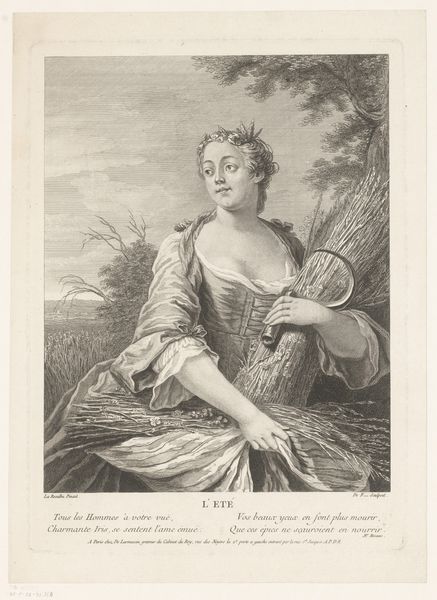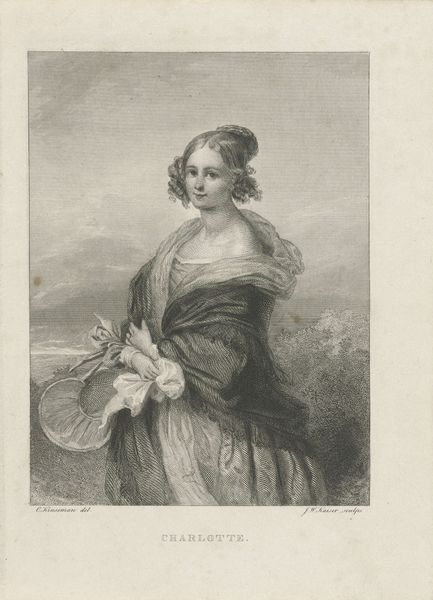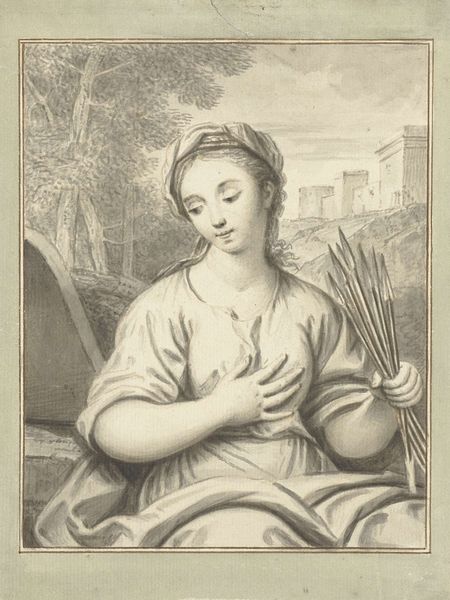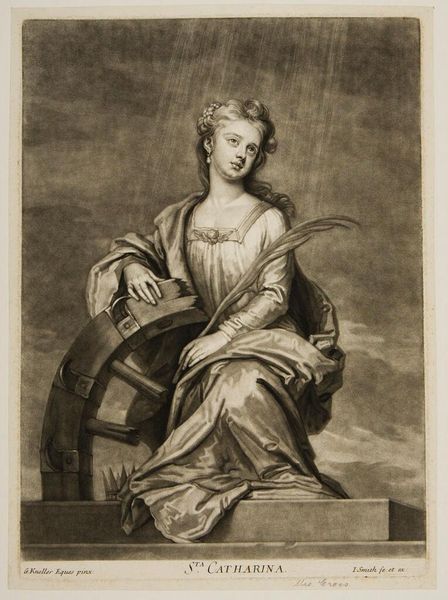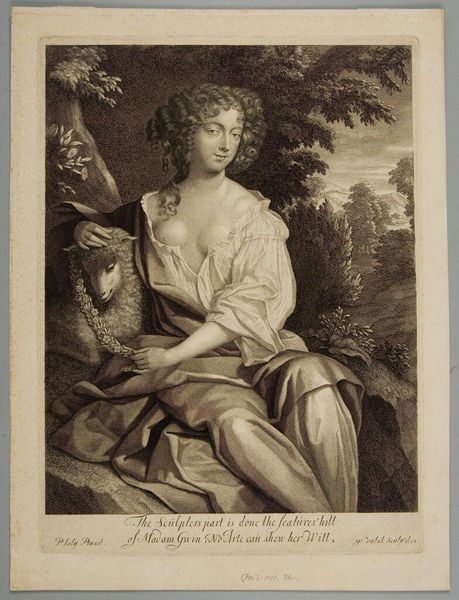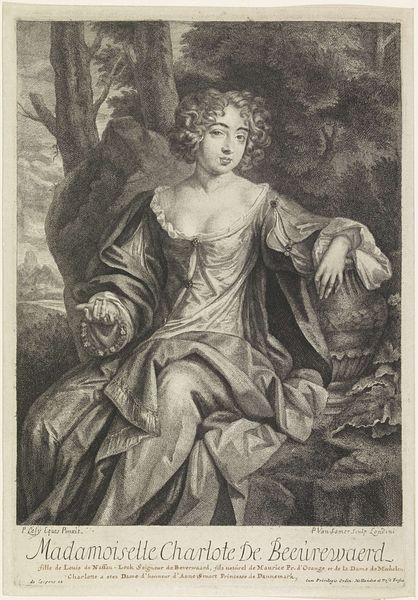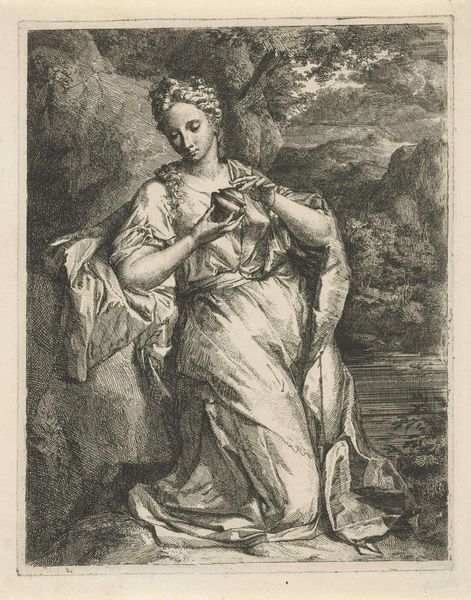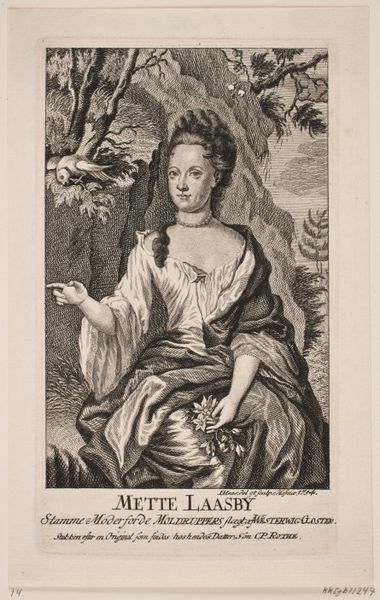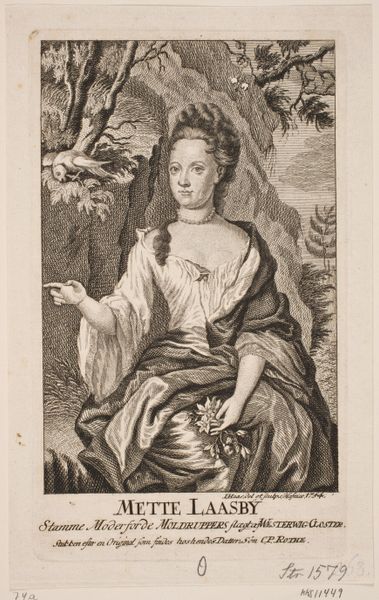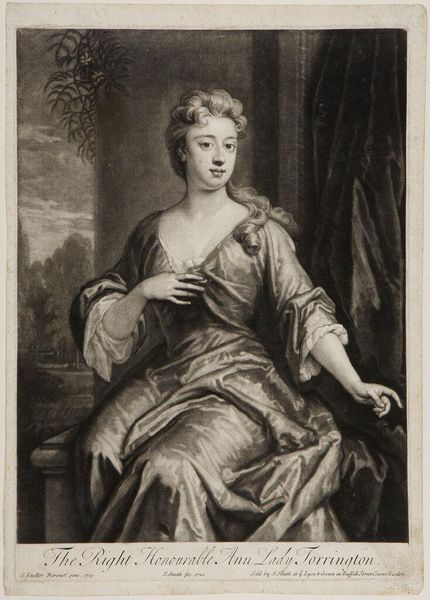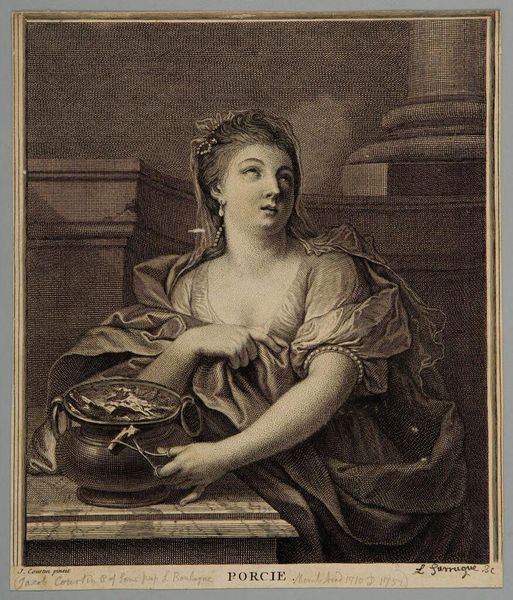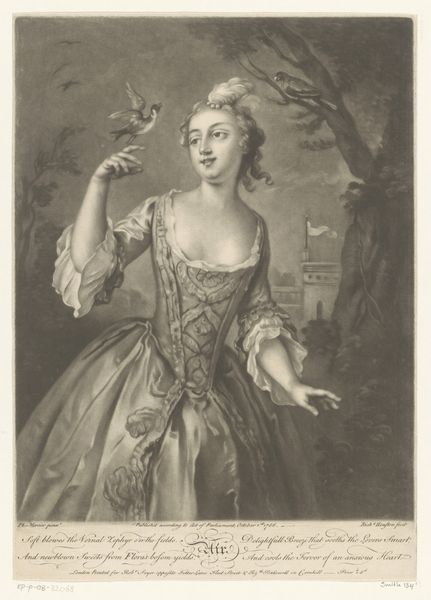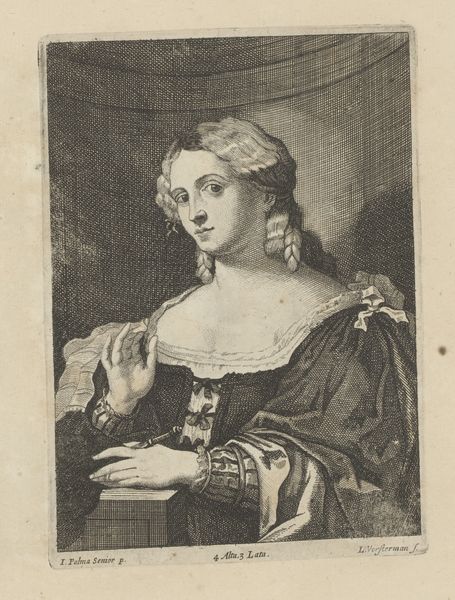
drawing, pencil, charcoal
#
portrait
#
drawing
#
pencil sketch
#
charcoal drawing
#
charcoal art
#
pencil drawing
#
pencil
#
portrait drawing
#
charcoal
#
pencil art
#
watercolor
#
rococo
Dimensions: height 178 mm, width 140 mm
Copyright: Rijks Museum: Open Domain
Curator: Welcome. We are standing before "De Naarstigheid," or "The Diligence," a pencil and charcoal drawing made around 1745 by Louis Fabritius Dubourg, currently held here at the Rijksmuseum. What are your first thoughts? Editor: My initial impression is of poised contemplation. There's a dreamlike quality to the grayscale tones, and the figure seems lost in thought, despite holding what looks like a book. Curator: Indeed. It's important to consider the context. Dubourg, while less known today, catered to the tastes of the mid-18th century elite, often producing allegorical and mythological scenes that reflected contemporary ideals of virtue and refined leisure. This work speaks directly to the virtue of industriousness. Editor: The contrast in textures intrigues me, how the soft blending around the drapery clashes with sharper lines defining the figure’s profile, that stark silhouette. It nearly splits the work in two. And look at the bee skep by the archway! Are those bees emerging from it? Curator: Precisely! The bees are an essential detail, functioning as an emblem for the virtue that is so crucial for society's benefit. This ties in with the period's emphasis on the civic good. There is also a heavy classical ideal running through this, notice the woman's features are derived from Greek sculpture. Editor: You're right; it creates this beautiful tension. A kind of pull, where it’s hard to know if the light is about to descend into darkness, or about to banish shadow all together. Curator: That may indeed have been part of Dubourg’s aim—this subtle sense of moral urgency conveyed through aesthetics. The work encourages its aristocratic audience to engage in reflection but simultaneously nudging them towards diligence for social betterment. Editor: That adds layers to how one interprets those emerging bees too, an impending threat almost—labor as a concept of risk, even. Very striking. I initially took them simply as a nice nature study but I can see that now they were deliberately drawn for this specific composition, adding another layer of meaning to it. Curator: Precisely. So what starts as a simple sketch opens into a whole world of ethical and societal implications. Editor: A fine example of how art engages both our eye and our minds simultaneously. A very productive few minutes indeed.
Comments
No comments
Be the first to comment and join the conversation on the ultimate creative platform.
